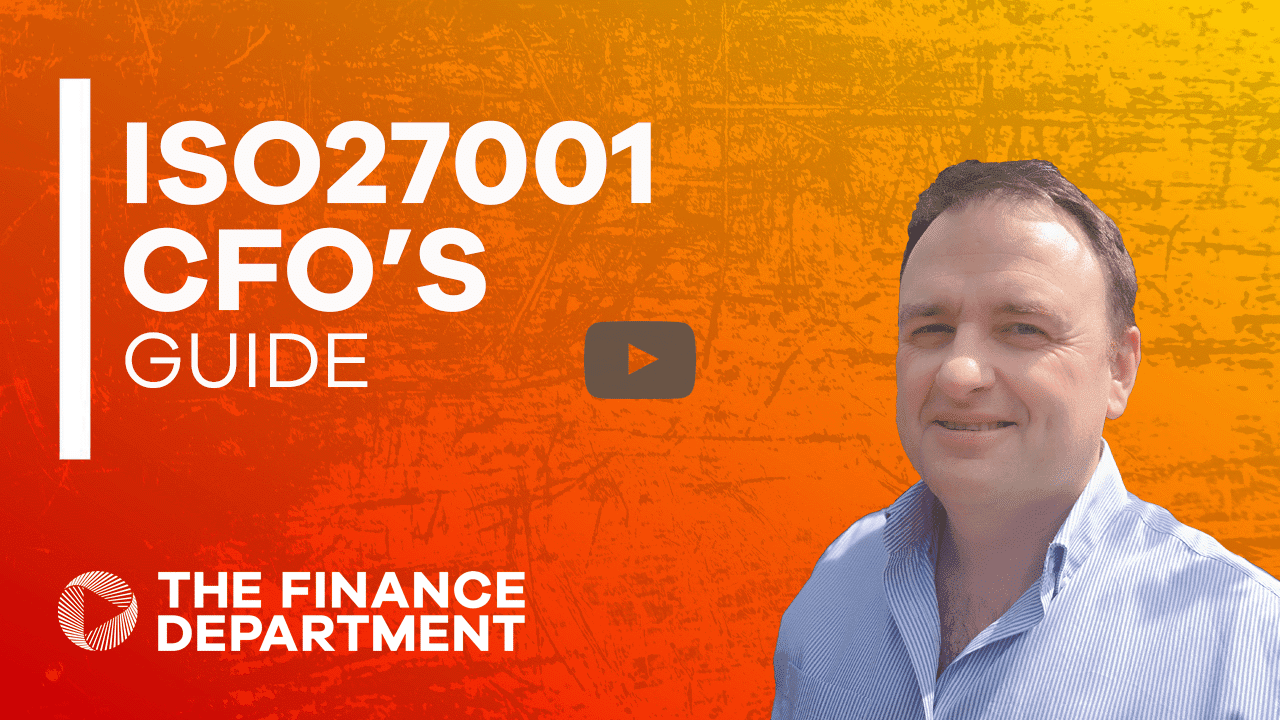Join today and start learning
TFD is the learning platform built for finance professionals.
This content is available as part of our bitesized video series.
Watch this video today by joining our free community.
Video : R&D Tax Credits – What Is Qualifying Activity?
In this videos, Nathaniel explains the activities that qualify for R&D relief and the 4 main points a project needs to hit to be considered for R&D.
Qualifying activity is a key term that should come up in pretty much in every conversation about R&D tax credits. And it refers to HMRC’s definition of what R&D actually is. So, what that means is, it’s the activities you’ve done, the things that you’ve undertaken, the projects you’ve been involved in that qualify for R&D relief. HMRC offer pretty clear guidance on what that is, and there are four main points that I’ll cover in this video, that a project needs to hit in order to be considered R&D in HMRC’s definition. And those points are an advance in science and technology, technical uncertainty, competent professionals working on the project, and actually doing something to overcome the technical uncertainties.
So, to break those down in to bit more detail, an advance in science and technology is effectively anything where, any objective of a project that is trying to do something over and above the existing state of technology within the sector. So, it can’t just be trying to do something new, novel, innovative for the business in isolation, it has to apply to the wider sector. So, an example of that would be trying to make a production process more efficient, or more environmentally-friendly than it currently is, trying to develop a new product that hasn’t been done before by another company, trying to iterate and improve upon an existing product, to make it cheaper, or in a more environmentally-friendly manner, or to bring out new technical features for the product, or to do the same with the service. So, for example, developing a new software platform that doesn’t currently exist and operates in a different way to what’s already out there. Crucially, it can, the product or service or process that you’re attempting to develop can be similar to what is already on the market, but it could be doing something in a slightly different way. It could be more cost effective, it could be more environmentally-friendly. So, all of these things would be considered an advance in science and technology.
The second point is that there’s got to be technical uncertainty encountered during the project. Now, technical uncertainty is different from commercial uncertainty. So, a commercial uncertainty would be, for example, developing a new product and then attempting to sell it in a new market. You might have to go out and do market research to see what price point you could bring it out at, that would be a commercial uncertainty, and that would fall outside of the R&D scheme. So, technical uncertainty is something where you are using technology to solve a problem and you’re not entirely sure how to solve the problem with that technology, and thus you have to undertake R&D. That would be the definition of technical uncertainty.
Third point, is that there’s got to be competent professionals involved in the project. So, a competent professional is anyone who has relevant sector experience or relevant qualifications, that gives them insight into the technology that would be being used in the project. If you took a software developer and you ask them to work on an advanced textile, they may have some difficulties during the development. In fact, they almost certainly will have some difficulties during the development because that won’t be their area of expertise. If you took a textiles expert and put them on the same project, they may be able to resolve the issues that the software developer was facing, and thus, it wouldn’t be considered a proper technical uncertainty. It would be considered readily deducible to a competent professional and thus, not a technical uncertainty. However, if the textiles expert encountered a lot of difficulties during that development process, couldn’t figure out the problem, couldn’t solve it and had to try different things to come up with a resolution then, that would be considered a technical uncertainty because it wouldn’t be readily deducible to a competent professional in the field.
Finally, the last point, it seems really obvious, but you’ve actually got to take action. You have to do something to overcome the technical uncertainties. So, you can’t just have a really great idea for a brand new software program, have a load of meetings with your staff about how fantastic this product is going to be, and not actually go into development and then submit an R&D tax credit application. There must be action taken to resolve the technical uncertainties, but of course, HMRC have to include it there for pretty clear reasons.
So that is qualifying activity in a nutshell. Obviously, if you want more information, there is a lot more to it than that and sector specific examples. You can visit apogee.co.uk, where we have articles on examples of qualifying activity of a whole range of sectors.
Nat founded Apogee Associates as he believes UK businesses deserve an offering that is second-to-none for service and value delivered, whilst having a positive impact on the environment. Apogee Associates are the sustainable R&D tax credit specialists, helping businesses of all sizes get money for their innovation. Their thorough and diligent process, supported by a comprehensive and robust technical report, has ensured that in the over 500 applications they’ve worked on, they have maintained a 100% success rate; every one has been processed in full and without query.
Video: R&D Tax Credits – What Is Qualifying Activity?
In this videos, Nathaniel explains the activities that qualify for R&D relief and the 4 main points a project needs to hit to be considered for R&D.
Qualifying activity is a key term that should come up in pretty much in every conversation about R&D tax credits. And it refers to HMRC’s definition of what R&D actually is. So, what that means is, it’s the activities you’ve done, the things that you’ve undertaken, the projects you’ve been involved in that qualify for R&D relief. HMRC offer pretty clear guidance on what that is, and there are four main points that I’ll cover in this video, that a project needs to hit in order to be considered R&D in HMRC’s definition. And those points are an advance in science and technology, technical uncertainty, competent professionals working on the project, and actually doing something to overcome the technical uncertainties.
So, to break those down in to bit more detail, an advance in science and technology is effectively anything where, any objective of a project that is trying to do something over and above the existing state of technology within the sector. So, it can’t just be trying to do something new, novel, innovative for the business in isolation, it has to apply to the wider sector. So, an example of that would be trying to make a production process more efficient, or more environmentally-friendly than it currently is, trying to develop a new product that hasn’t been done before by another company, trying to iterate and improve upon an existing product, to make it cheaper, or in a more environmentally-friendly manner, or to bring out new technical features for the product, or to do the same with the service. So, for example, developing a new software platform that doesn’t currently exist and operates in a different way to what’s already out there. Crucially, it can, the product or service or process that you’re attempting to develop can be similar to what is already on the market, but it could be doing something in a slightly different way. It could be more cost effective, it could be more environmentally-friendly. So, all of these things would be considered an advance in science and technology.
The second point is that there’s got to be technical uncertainty encountered during the project. Now, technical uncertainty is different from commercial uncertainty. So, a commercial uncertainty would be, for example, developing a new product and then attempting to sell it in a new market. You might have to go out and do market research to see what price point you could bring it out at, that would be a commercial uncertainty, and that would fall outside of the R&D scheme. So, technical uncertainty is something where you are using technology to solve a problem and you’re not entirely sure how to solve the problem with that technology, and thus you have to undertake R&D. That would be the definition of technical uncertainty.
Third point, is that there’s got to be competent professionals involved in the project. So, a competent professional is anyone who has relevant sector experience or relevant qualifications, that gives them insight into the technology that would be being used in the project. If you took a software developer and you ask them to work on an advanced textile, they may have some difficulties during the development. In fact, they almost certainly will have some difficulties during the development because that won’t be their area of expertise. If you took a textiles expert and put them on the same project, they may be able to resolve the issues that the software developer was facing, and thus, it wouldn’t be considered a proper technical uncertainty. It would be considered readily deducible to a competent professional and thus, not a technical uncertainty. However, if the textiles expert encountered a lot of difficulties during that development process, couldn’t figure out the problem, couldn’t solve it and had to try different things to come up with a resolution then, that would be considered a technical uncertainty because it wouldn’t be readily deducible to a competent professional in the field.
Finally, the last point, it seems really obvious, but you’ve actually got to take action. You have to do something to overcome the technical uncertainties. So, you can’t just have a really great idea for a brand new software program, have a load of meetings with your staff about how fantastic this product is going to be, and not actually go into development and then submit an R&D tax credit application. There must be action taken to resolve the technical uncertainties, but of course, HMRC have to include it there for pretty clear reasons.
So that is qualifying activity in a nutshell. Obviously, if you want more information, there is a lot more to it than that and sector specific examples. You can visit apogee.co.uk, where we have articles on examples of qualifying activity of a whole range of sectors.
Nat founded Apogee Associates as he believes UK businesses deserve an offering that is second-to-none for service and value delivered, whilst having a positive impact on the environment. Apogee Associates are the sustainable R&D tax credit specialists, helping businesses of all sizes get money for their innovation. Their thorough and diligent process, supported by a comprehensive and robust technical report, has ensured that in the over 500 applications they’ve worked on, they have maintained a 100% success rate; every one has been processed in full and without query.










